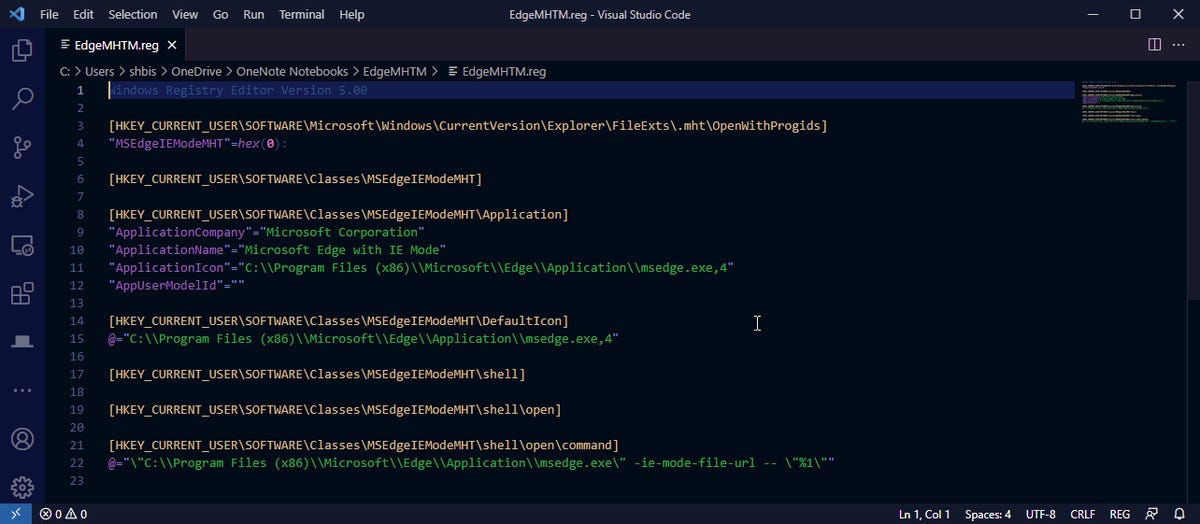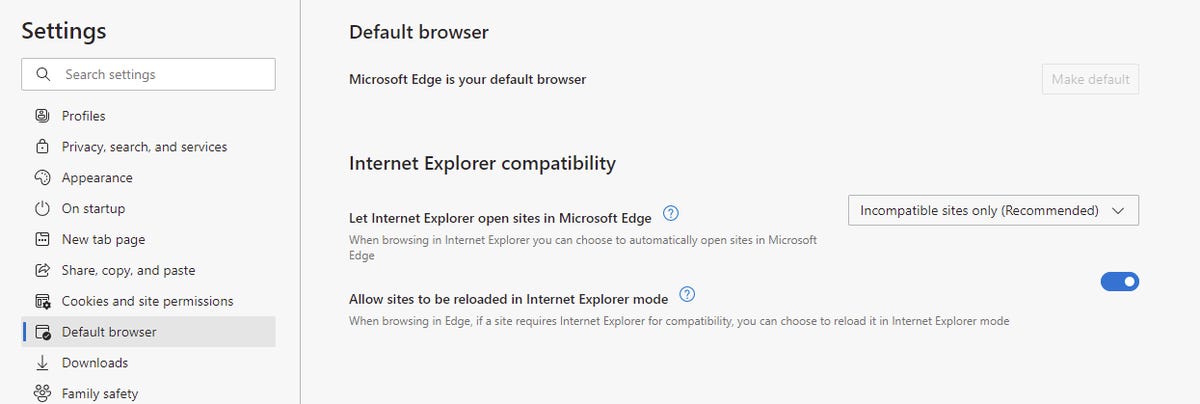Say goodbye to Internet Explorer. After more than 25 years, it’s finally deprecated, Microsoft 365 will no longer be supported from August 2021, and will disappear from the desktop in 2022. It hangs inside the new Chromium-based Edge as compatibility mode.
Even so, it seems strange that IE will come out. IE has long been part of Windows’ internals, and its Trident engine runs tools such as Outlook’s browser view and Windows’s help system. Even on systems where the new Edge is set as the default, when you open an email from Outlook in browser view, it opens in Internet Explorer.
This is because Outlook uses a technique that encapsulates HTML and image resources into a single file. MHTML (“MIME Encapsulation of Aggregate HTML Documents”) wants web pages to provide interaction with applets, ActiveX controls, or Flash, and designers want their dynamic content to be part of their email messages. Designed for the world. It’s a handy tool for composing formatted emails using familiar HTML authoring tools, but it bundles all the resources you need into a single archive attached to your message.
to see: Windows 10 Start Menu Hacking (Tech Republic Premium)
It’s an old technology, but it’s still in use. Now that IE is about to disappear, can those messages be viewed in modern browsers like Edge? The answer to that question is complicated. If you set up file associations in Windows 10 to support MHTML in Outlook, the email will open in Edge, but only as text (often you will see a garbled URL where the image was. Will be), the active link will not be displayed. Although Chromium supports MHTML, it also acts as an authoring and archiving tool for saving page content as MHTML.
ZDNet newsletter open in IE mode in Edge.
Image: Simon Bisson
So how do you use Edge to display MHTML and retrieve message content from Outlook’s restricted view pane? The answer lies in Edge’s Internet Explorer compatibility, which is the full version of IE’s Trident engine that runs in the context of the Edge tab. What you need is a way to force a view of the messages, replacing Internet Explorer as a registered viewer for these file types, but forcing them to open in Trident.
Microsoft recently published a help document that provides instructions on how to enable that feature. You need to build a set of policies for managed PCs or apply a registry file to your personal device. It was also created for Edge 90 and requires fine-tuning on Edge 91 and above. Still, there’s a lot here to help you prepare your PC. This section describes how to use it to update your PC.
I was working on a personal machine, so I used the .reg file approach. You need to add the Edge installation location to the files provided by Microsoft. Copy it to Notepad or VS Code and save it with a .reg extension. Conveniently, VS Code now provides a language server for registry scripts, so you can use colors to verify that your code is correct. Be sure to replace “” in the directory path with “” because the registry tool needs to escape the reserved characters in the string.

Edit the Edge MHTML Support Registry file in VS Code.
Image: Simon Bisson
Double-click the edited .reg file to open Regedit and apply the registry changes. Once this is done, we recommend that you restart your PC to ensure that it loads in the next step.
This is where undocumented tricks come in. If you are using Edge 91 or later without changing the behavior of your browser in IE mode, you will continue to see unformatted text when you try to render MHTML content. Open the Edge settings and[既定のブラウザー]Go to. Here you will find a section for dealing with Internet Explorer compatibility. Select the Allow Site Reload in Internet Explorer Mode option. This will automatically load the incompatible content (in this case MHTML) using Trident.

If necessary, make sure your Edge is configured to reload the page in IE mode.
Simon Bisson
If everything is correct, you can open the message and display it in your browser using the Actions menu. Outlook caches the email.mht file and passes its location to Edge. The file is then opened and displayed using Edge’s IE mode.
Microsoft needs to make this easier, as IE 365 support for IE is only a few months away. Using Group Policy is perfectly fine for companies that can create and distribute policies, but it’s difficult in today’s remote work environment and there are no instructions to use the latest management tools via Intune. .. Similarly, building and testing registry files is not for the average home user.
to see: Cloud computing: Microsoft sets new data storage options for European customers
All you need to do is identify where your Edge and Office teams are sitting and using (or rather using) Internet Explorer within Office. Next, you need to modify both the Edge and Office installers to make the appropriate registry changes. This replaces Internet Explorer as the default viewer and replaces Edge running in IE mode when you update Edge. The user does not have to do anything. Only emails opened in the Edge browser, not IE, are displayed.
Of course, in the long run, Microsoft needs to move away from MHTML as a format altogether. The web page archiving format is still needed and must be supported by all browsers. If you choose Chrome, your email content must open in Chrome. This is the same as for Firefox and Safari. But is there a place to build such a standard?
These are complex questions, probably more complex than building policies or editing the Windows registry. Therefore, at this time, these are the only options.
Saying goodbye to Internet Explorer can be more complicated than you might think.
Source link Saying goodbye to Internet Explorer can be more complicated than you might think.
"explorer" - Google News
June 03, 2021 at 06:42PM
https://ift.tt/2RiFteK
Saying goodbye to Internet Explorer can be more complicated than you might think. - Texasnewstoday.com
"explorer" - Google News
https://ift.tt/2zIjLrm
Bagikan Berita Ini














0 Response to "Saying goodbye to Internet Explorer can be more complicated than you might think. - Texasnewstoday.com"
Post a Comment